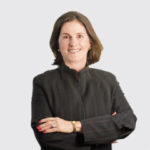Okay, I’ll admit it. I was skeptical when I heard a few years ago that Google was working on an eyeglass apparatus with smartphone capabilities. Not that I don’t appreciate wearable technology — I’ve counted on my Nike FuelBand for several years now to help keep me active. But now that Google Glass is a reality — at least for those approved as Glass Explorers — it remains to be seen how ordinary consumers will take to the final product. One thing is clear: Consumers and business people will have more and more technology tools at their disposal in the coming years, and industries of every kind need to embrace them.
Still, I was a bit surprised when I came across a recent article about a new “Glass Journalism” course debuting this fall at the University of Southern California (USC). The journalism field hasn’t tended to take the lead technology-wise, and newspapers, in particular, have struggled to move from print to websites and social media. Apparently, however, this first-of-its-kind class will attempt to turn that around.
“I’m not drinking the Google Kool-Aid,” USC web journalism professor Robert Hernandez, who will be leading the class, told Fast Company. He said that while Google Glass currently has many limitations, as storytellers, journalists ignore at their own peril the possibilities that a technology like Glass offers.
It’s the kind of proactive approach that I applaud. Essentially it will give budding journalists a chance to get in front of a new technology for a change, and help shape it to their advantage. In some respects, it reminds me of when virtual meetings were becoming more of a reality and we chose to embrace rather than ignore them — incorporating hybrid events into PCMA’s meeting formats and as part of our education programs, in order to help meeting professionals figure out how they can complement their own face-to-face meetings.
Hernandez also is taking a fresh approach to education. He won’t be standing in the front of a traditional lecture hall explaining how he and other journalists before him have used Google Glass to report the news; he admits he has more questions than answers about the technology at this point. Instead, the class is designed to be a collaborative environment where developers, Glass Explorers, and journalism students explore the technology together to develop applications that will enhance both storytelling and story consumption.
It’ s an example of the get-ahead-of-the-curve kind of thinking that PCMA and the Dallas Convention & Visitors Bureau are fostering with our year-long BIG IDEAS initiative. The deadline to submit your innovative ideas to advance the meetings industry is fast approaching (via pcma.org/bigideas by June 1) — and the conversation about where those ideas can take us is ongoing. You can find more on the initiative on p. 24, and stay tuned in the coming months for exciting opportunities ahead.
